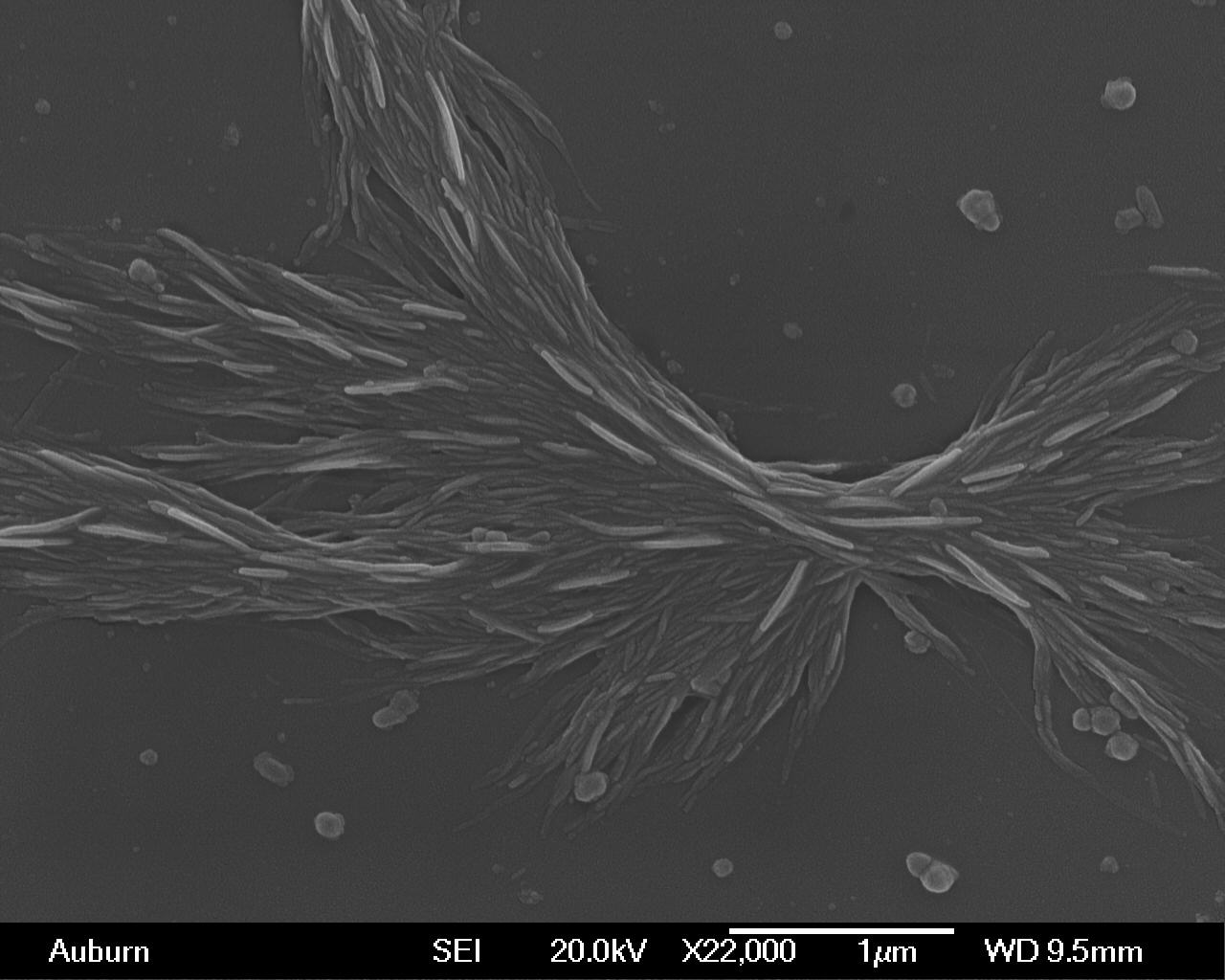Dr. Virginia A. Davis
Mary and John H. Sanders
Associate Professor
Chemical Engineering
DISPERSION:
Our research group has many types of equipment for mixing nanomaterials and liquids including stir bars, bath and horn sonicators, bottle rollers, orbital mixers, and impeller mixers. This broad range of equipment enables us to achieve uniform dispersions of nanomaterials while minimizing damage to the nanomaterial and or the polymeric dispersant. For dispersions in melts we use a Haake Minilab with counter-rotating twin screws and recirculation channel. This extruder enables us to produce samples from a mere 5 grams of polymer, and obtain relative viscosity measurements as the nanomaterial becomes dispersed.
CHARACTERIZATION:
Rheology:
Rheology
is a powerful probe of the microstructure of the dispersion.
Rheology can provide information on the size of the
individual or bundled nanomaterial in the
dispersion, whether or not the dispersion is liquid
crystalline, and how the microstructure of the dispersion
responds to shear. Since our dispersions include
highly volatile organic solvents, acids, thermoplastic melts, thermoset resins,
and biopolymer solutions we rel
y
on an Anton Paar MCR 301 rotational rheometer
with interchangeable accessories including both Peltier
heating/cooling and an oven, an evaporation blocker and a small angle light
scattering apparatus. Liquids can be characterized using a range of Couette,
parallel plate and cone and plate fixtures. Melts can be characterized
using either parallel plate or cone and plate
geometries.
MICROSCOPY:
Morphological
characterization is performed over multiple length scales using a Nikon
Microscope with Digital Imaging Workstation and High Numerical Aperture
Objectives and Cross Polarized DIC in both transmitted and reflected modes.
In addition, we use shared atomic force, scanning
electron, and transmission electron microscopy equipment
to examine smaller length scales than can be observed using visible
light.

ADDITIONAL METHODS
Understanding nanomaterial dispersion, surface chemistry, and the properties of macroscale assemblies requires use of numerous additional characterization methods. The Davis Group routinely utilizes the extensive equipment resources available throughout Auburn University. These include Atomic Force, Transmission Electron, and Scanning Electron Microscopy. Spectroscopic analyses such as UV-vis-NIR, Raman, and FTIR are also routinely performed. Finally, Thermal, mechanical, and electrical characterizations are a key part of evaluating the properties of the macroscale materials we assemble from cylindrical nanoscale building blocks.
Any opinions, findings, and conclusions or recommendations expressed in this material are those of the author(s) and do not necessarily reflect the views of the National Science Foundation.